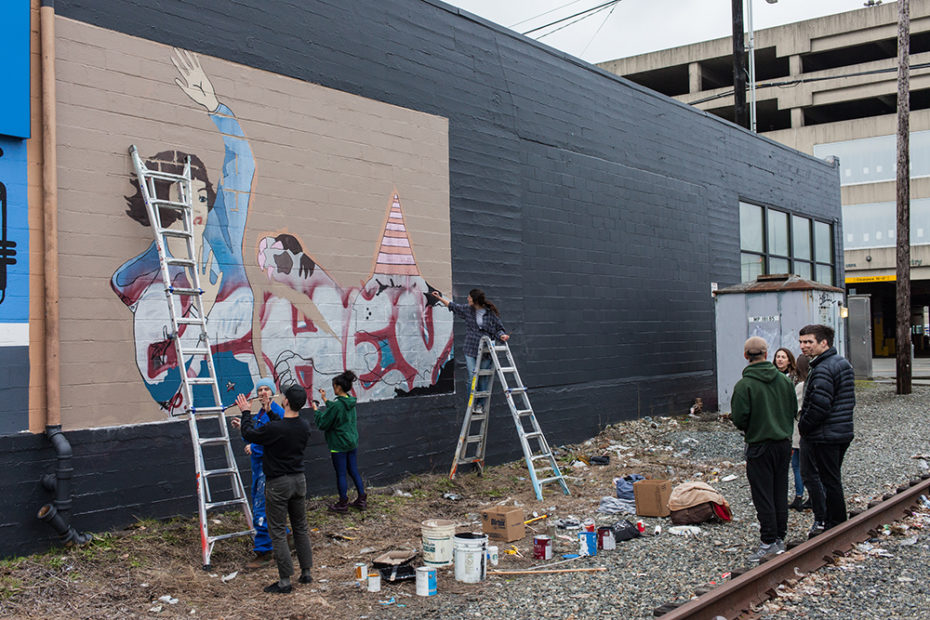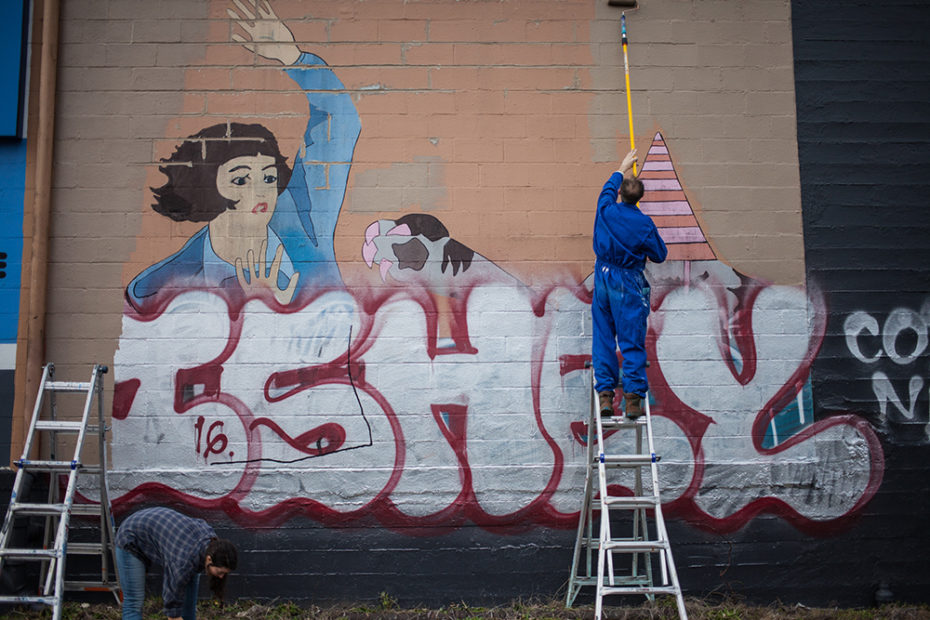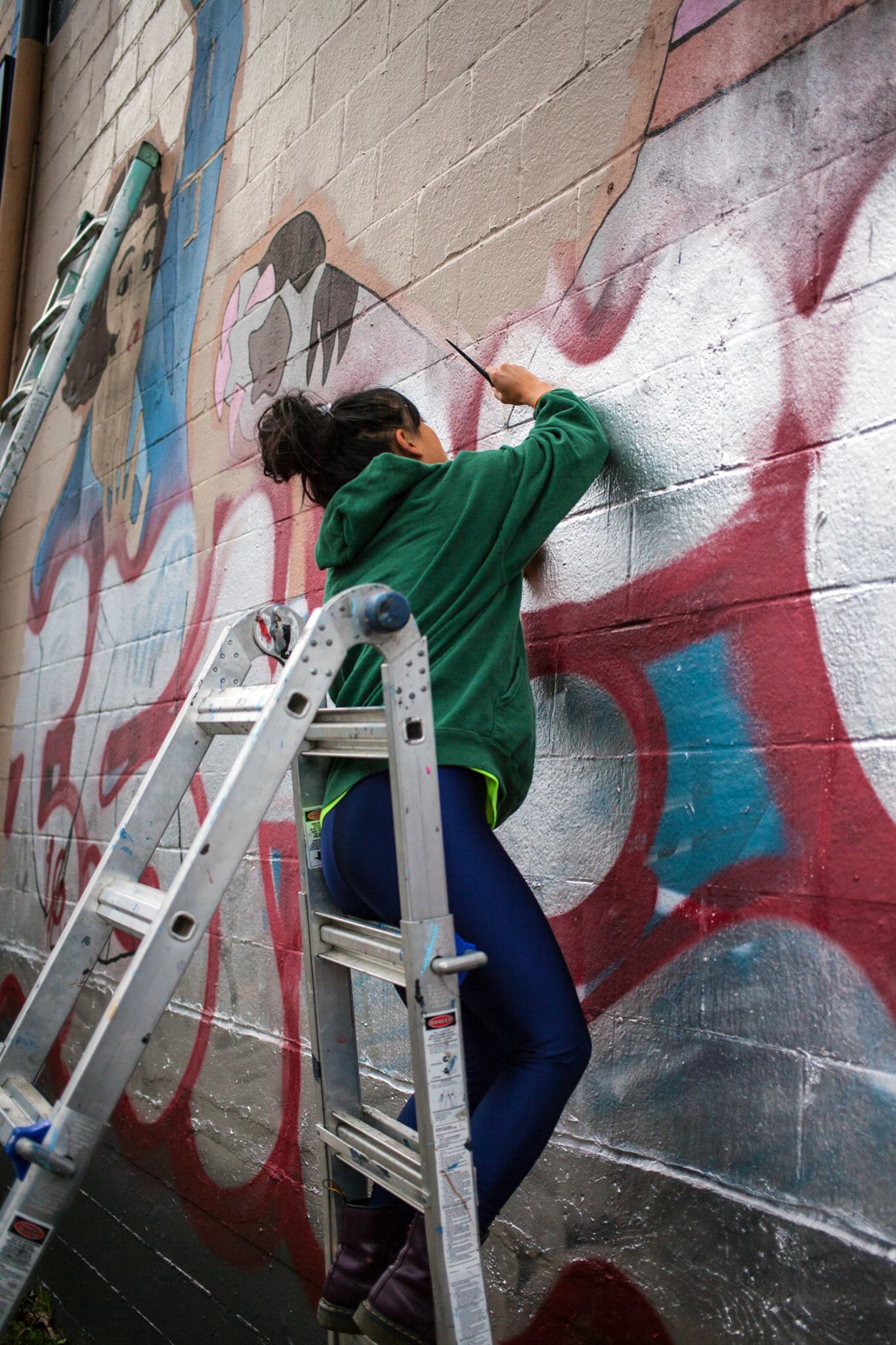Connie is an ongoing volunteer and artist with Urban ArtWorks, and we love working with her. Here are some of her thoughts about art and young people:
How did you find out about Urban Artworks? Which project(s) did you work on with us?
I was admiring the Richmark building at 12th and Pine one day last year and noticed Urban Artworks in the credit text. I googled it and – voila – was added to the volunteer list. The first project I volunteered at was the panther mural in SoDo. From that first experience began friendships that are among the strongest I have in Seattle to date (see the attached group photo). Working with Artworks was the first time I felt like part of an art community here. Studio painting can feel pretty isolating, so working on murals is an excellent way to flex your artmaking muscles whilst being out and in the world.
Other projects I’ve worked on include the Resource mural (SoDo), Zion United (CD), Richmark (back side of the building, Capitol Hill), the Seattle Art Fair Murals at Inscape (ID), and the Josh Keyes mural (SoDo track).
Tell us about yourself, where did you grow up / how did you find yourself in Seattle?
I was born and raised just outside of Detroit, in a pretty nice suburb–nothing extraordinary. I’ve liked making art since childhood and, over the course of many years, the pull of that became stronger than any other interest or passion in my life. And so after college in 2014 I moved to Seattle for a job, which would allow me to continue painting, and which I recently left to spend more time in the studio. I work at Arundel Books in Pioneer Square now, which specializes in art, photography, architecture, and poetry, and is a great complement to my practice.
Where do you get your inspiration from as an artist?
I draw a lot of ideas and forms from my body, both how it moves in external space and how it operates (as far as I can tell) on the inside. When I paint I’m thinking about how my body is moving in relation to the image/canvas, and at the same time imagining what the interior space of my body might look like, in ways that are both fantastical and mundane. I take a lot of dance classes and spend nights out grooving to inform what I’m doing, in addition to just looking/staring at the world around me. So far, the process has been exciting, comforting, and at times intimidating, which is a good mix.


In your opinion, what are some ways that public art helps create a sense of community?
In the making of public art, artists who are typically hermitted away in their studios come out into the light and collaborate, spend hours together, and push through barriers of small talk to build lasting relationships. In the reception of public art, people respond to the surprise (and hopefully delight) of seeing color being splashed onto buildings in their neighborhood by engaging artists in conversation, learning more about the work and how it’s made, and thus thinking about art more than they would have otherwise. Plus, when it’s done, the work stands on its own as part of the fabric of the community. A win-win-win.
What are your thoughts about public art as a tool to reach young people?
Building on the reasons that public art helps create community, to me there’s a pretty simple correlation between time spent doing X and the strength/meaningfulness of the relationships and ideas that come out of it. And so, it’s amazing that Artworks gets people involved early in their lives (I for sure would have appreciated an organization like Artworks if it had existed where I grew up). It’s also so empowering to learn the hard skills involved in making public art, which tends to be monumental in scale. You have to learn how to coordinate with people, negotiate wobbly ladders, use enamel and latex and spray paint, match colors, and stay safe through it all, which translates to really useful real life know-how!
Connie is showing her work at the Cloud Gallery this month. Her show opens on April 13, and you can learn more and RSVP on Facebook.


